X
wikiHow is a “wiki,” similar to Wikipedia, which means that many of our articles are co-written by multiple authors. To create this article, volunteer authors worked to edit and improve it over time.
This article has been viewed 26,803 times.
Learn more...
Theravāda—often known as Southern Buddhism—is one of Buddhism's three main schools. Its long history is replete with strong, simple practice methods and profound wisdom. This guide will show you how to start and develop a practice in this school.
Steps
Method 1
Method 1 of 2:
For Practitioners at Home
-
1Start with the foundation. All Buddhist schools, but particularly Theravāda, identify four foundational, interacting qualities, which you should cultivate to enable you to develop a practice. These are dāna, meaning giving or generosity, sīla, meaning virtue or ethics, samādhi, meaning meditation, and paññā, meaning wisdom or deep understanding. For best results, you should assign equal importance to each.
- People often never really get their practices started, because they try to bypass generosity and virtue, which resemble the vehicle's fuel or the house's walls. Without them, a practice never develops and topples very easily. Meditation stays too shallow and wisdom too superficial to be of any life-changing value. Each virtue reinforces the next in a circular pattern, clearing the way to achieving deeper tranquility and more revealing insight.
-
2Develop your generosity. This is never as simple as donating money from a distance. Instead, it's a moment-to-moment practice of liberality toward yourself and others. It manifests in activities such as volunteer work; donating food, clothing, medicines, and other support to practitioners of higher virtue and wisdom; and offering your care, patience, and kindness to those in need—including yourself.
- Your intentions underwrite all of these practices, so develop them skillfully and compassionately. Formulate your intentions to extend the same compassion to yourself that you offer to others. Doing so bears witness to a heart mature in virtue.
Advertisement -
3Keep the precepts. Lay people often choose to observe five or eight precepts, five being more common for everyday Buddhists. Although there is no harm in breaking your precepts by accident or unawareness, the longer you can keep them the deeper and more stable your practice becomes.
- The first five precepts are to refrain from killing, stealing; harmful sexual activity; improper speech; and substance abuse. Jewish and Christian readers should be experiencing a modicum of déjà vu at this juncture.
- The precepts' functional role is fascinating because keeping them builds a sense of confidence in life—essentially your lifestyle evolves in such a way that the wise praise your qualities and you avoid becoming a target of disapprobation. But their deeper role is providing a sense of having no regrets, which removes a hinderance to incredibly powerful meditation.
-
4Practice meditation. Meditation is all about learning the true nature of your body, feelings, mind, and mental objects, as well as how to skillfully and wisely develop them to diminish suffering. The authors of the canon and other early Buddhist texts state throughout that a practitioner should pursue deep states of stillness (or jhana) via samatha, as a way to the insight (or 'seeing clearly') attained via vipassanā. Stillness practices weaken the aspects of the mind that hinder insight. Meditating with a turbulent mind can be like looking through foggy or blacked-out lenses.
- The Dhammapada sums this up very neatly: there is no jhana without insight, no insight without jhana. Having both, one is close to Nibbana.
-
5Practice wisdom. This ultimately means applying your understanding in each moment, and allowing your wisdom to grow, as every situation is different. This particular skill results from the other three aspects, so whereas it can be developed on a simple level by reading early texts, listening to good lectures, and attending personal retreats, this mode blossoms slowly, but is perhaps the most beautiful flower of the four.
- Wisdom is often engaged and boosted by generosity, since it is easy to follow one's innate preferences, but to be patient, kind, and wise in challenging situations is an expression of a generous mind.
-
6Study the early texts. The early texts' presentations tend to be the simplest and most straightforward; however, over the last 100-odd years, there's been a great deal of research into texts that may be recognised and those determined to be inauthentic. The complication is that these recent distinctions are not always known by those starting or keeping a practice, so teachers can often innocently present later ideas and concepts traditionally thought of as being authentically the Buddha's own. Fortunately it's becoming much easier in the 21st century for everyday practitioners to find out for themselves.
- What distinguishes most Theravāda traditions is their emphasis the historical Buddha's teachings, rather than on subsequent interpretations and new goals. This is largely due to geographical distance between the schools. Therefore some of the characteristics of Mahāyāna and Vajrayāna schools are not present at all. Theravāda does have its own later ideas however, such as those found in the Abhidhamma and commentaries such as the Visuddhimagga, which were complied many centuries after the historical Buddha's death.
-
7Study modern texts. Practitioners from all three Buddhist schools have produced many fantastic meditation and life manuals, which present excellent tricks and skills for developing your practice. The early texts function as a central point of reference for what the Buddha actually taught, but the later texts can give personal experiences of other practitioners in their interpretation of the early texts, which can be very inspiring.
- There is usually no problem in reading non-Theravāda texts as scholars have noted strong similarities, particularly between Theravāda and Zen. But the practitioner should know the later doctrinal ideas so as to be able to recognise what is and what isn't of the Theravāda school and avoid complicating their practice.
-
8Balance your practice. The early Buddhist texts seem to promulgate no one-sided practices—such as awakening through study only, through meditation only, through virtue, or confidence only. Instead, they're all themes that can be more or less dominant as part of the whole. So it's the essence of the practice to reflect and study, to practice samatha and vipassanā meditation, and to develop generosity and virtue.
- Exceptions to this case are actually very rare and are a result of conditions such as kamma, or (more often) the texts themselves have been proven to be late or corrupted.
Advertisement
Method 2
Method 2 of 2:
Staying in a Monastery
-
1Stay for a short period. At the beginning, it's very useful to take the occasional weekend to stay at a respected temple or monastery. This almost invariably involves volunteer work, such as helping the monastics around the grounds and buildings or with other volunteers and monastic trainees (often known as Anagarikas) in the kitchen, but is an important foundation of generosity as well as developing your ethical and wisdom skills when dealing with people.
- Monastic life in good monasteries can be very demanding for monastic residents, generally because the temple functions as a central facet of cultural expectations and holy days, as well as offering services such as teaching, counselling, funerals and other services of what is more known as religious Buddhism. For this reason, secular or non-monastic Buddhists can learn a great deal about how one can develop a strong practice in the face of demanding expectations and service demands in a confined environment, often with very little expenditure, that monastics have to meet seven days a week.
-
2Stay for a rains retreat. Generally, this is for more advanced practitioners staying for the whole three months of the wet season. Around the world many hundreds of people book for the retreats in their preferred monasteries, so it is best to make contact a year in advance especially for well known monasteries.
-
3Find the simplicity. Theravāda, in an orthodox practice, tends to be very plain, simple, minimalist, and down-to-earth. Cultural Theravāda in contrast is often distinguished by routines, regular group ceremonies, and chanting, as well as focus on technique-based styles of meditation. For many people, Orthodox Theravāda can seem very dry, unengaged, and boring, but that's because its focus is on giving the practice top priority.
-
4Ordain as a monk or nun. Ordinations, generally are of benefit after at least a year of keeping the eight precepts, but the longer the better. Ordination in the more respected monasteries (which are now very rare in Southeast Asia), is often deeply confronting and challenging as it features few group or social activities and maximum time in seclusion to be able to develop a strong practice.
- It is best to dedicate several years for the monastic practice, as in most cases the practice really only starts to take an effect after five to six years as a full monk (known as a bhikkhu) or nun (known as a bhikkhuni). Temporary ordinations alternatively are fantastic for a cultural experience.
-
5Practice kindness, not hardness. In a monastery, it becomes very easy to become strict and inflexible—especially for visitors. The quality of kindness is foundational to being able to develop your generosity, virtue, meditation, and ultimately your understanding of the world.
Advertisement
Community Q&A
-
QuestionDoes a mantra have any role in the meditation practice, or is the focus on the breath?
 Richard BartholomewCommunity AnswerMantras do indeed play a role in Theravadan meditation practice. Although the breath is the most commonly recommended object of meditation, Theravadan practitioners may also employ various mantras in that capacity. For instance, the Buddho mantra taught by Ajahn Chah and his students is widely practiced in the Thai Forest tradition.
Richard BartholomewCommunity AnswerMantras do indeed play a role in Theravadan meditation practice. Although the breath is the most commonly recommended object of meditation, Theravadan practitioners may also employ various mantras in that capacity. For instance, the Buddho mantra taught by Ajahn Chah and his students is widely practiced in the Thai Forest tradition.
Advertisement
About This Article
Advertisement
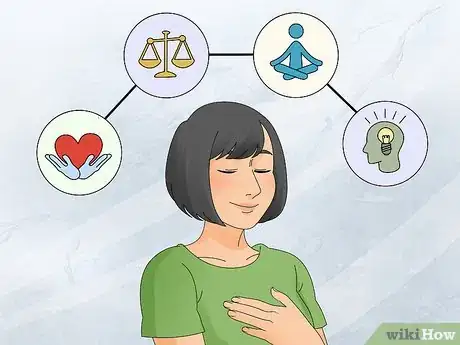

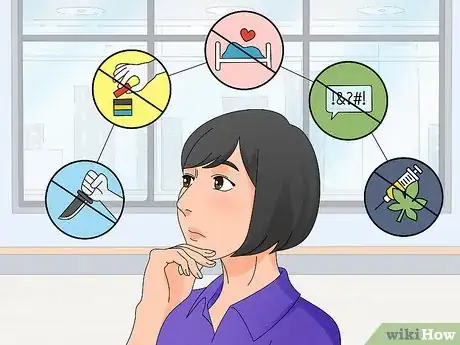
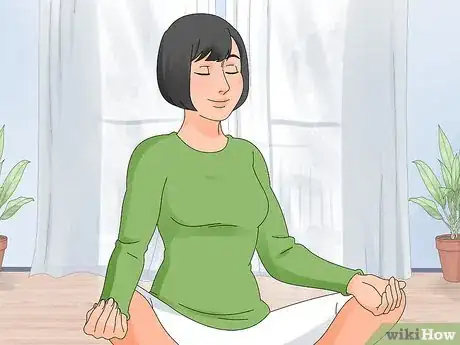





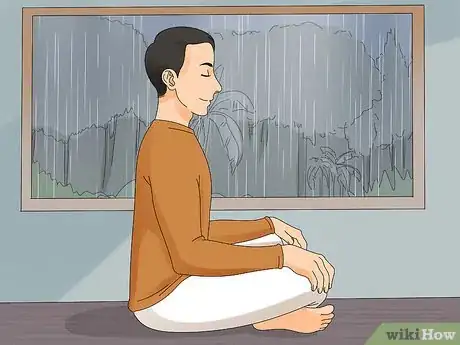

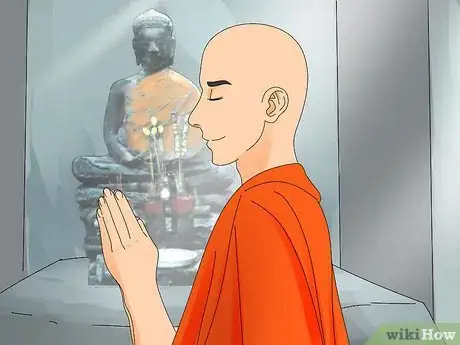
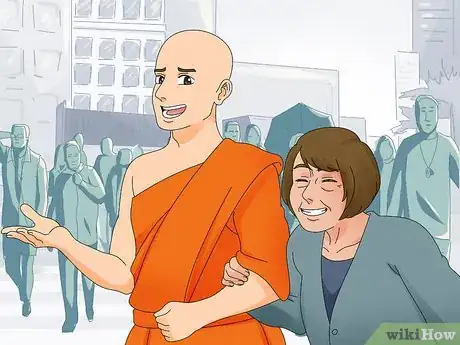




-Step-10-Version-3.webp)





















































